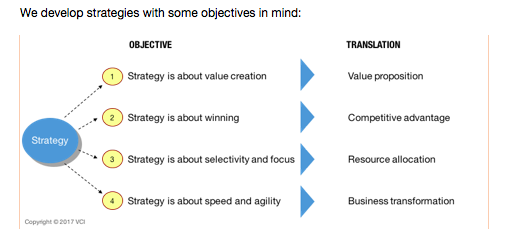By: Gideon Malherbe, VCI Founding Partner
Introduction
My insurance friends like to talk about building a “chassis” like in the car business, to “carry” the rest of the offerings into the market. I like that. A platform business, rather than a pipeline business does something similar, it creates value by facilitating exchanges between consumers, agencies and producers.
Just over ten years ago, there were five major mobile phone manufacturers: Nokia, Samsung, Motorola, Sony Ericsson and LG. These five collectively controlled about 90% of the industry’s global profits. Enter Apple’s iPhone. At its launch in 2015, iPhone grabbed 92% of global profits. Four of the other five mobile phone players made zero profit.
The strategist in me would quickly refer to the strategic advantages that should have protected the new losers: strong product differentiation, trusted brands, leading operating systems, excellent logistics, protective regulation, huge R&D budgets, and massive scale. Certainly, the iPhone had an innovative design and novel capabilities. But in 2007, Apple was a weak and nonthreatening player amongst these monoliths. It had less than 4% of market share in desktop operating systems and none at all in mobile phones.
Apple surged in the marketplace by leveraging new strategies and exploiting the power of platforms. Businesses that operate on platforms provide the opportunity to bring together producers and consumers. The platform business’s core assets are information and interaction. It is here that platform businesses create value and increase their competitive advantage.
The value created by Apple with its iPhone and IOS was by connecting the markets from both sides, resulting in network effects. Apple’s App Store as of 2017 offered 2.2 million apps.
The list of front running platform companies includes Facebook, Uber and Alibaba. Unlike linear businesses, they don’t create or control inventory. Rather, they create connections. Platform companies control their intellectual property and governance. Other producers create the offerings for the consumers.
Apple goes further to illustrate how a pipeline business and a platform business are not mutually exclusive. A company can be both. While plenty of pipeline companies are highly competitive, establishing a platform strategy into a pipeline company tends create a catapult. Now we are seeing pipeline mega players like Nike and GE jostling to bring platforms into their business models as necessary for survival. It should be said, when a well-designed platform company enters a pipeline firm’s market, the platform almost always wins.
What is a Platform?
A platform is a business model that creates value by facilitating exchanges between two or more interdependent groups, usually consumers and producers.

Platforms can be viewed as ecosystems. Successful platforms readily enable and facilitate the exchange while simultaneously reducing friction (transaction cost). They also enable external innovation. Through connected technology, these ecosystems empower the platform to scale in unprecedented ways.
The traditional view of supply chain is no longer the central factor of business value. The new source of value lies in digitizing the supply chain. One of the core competencies of the platform business. But the underlying technology is only a component of a successful platform business model. Identifying how to create value and building a network will determine the true potential of scale.
Platforms Dominate the Economy
Today’s platform businesses are able to facilitate exchanges amongst decentralized networks at an unprecedented scale. The most successful thus far are Apple, Google and Facebook. But the number of platform businesses as economic leaders is growing. Forbes’ 2016 list of most valuable brands had platform businesses as four of the top five, and eleven of the top twenty. By 2017, we saw the top five firms by market cap as all platform businesses.
Today, the biggest IPOs and most successful startups alike are platform businesses. The list goes on: Instagram, eBay, Amazon, YouTube, Twitch, Snapchat, Slack, WhatsApp, Uber, Lyft, Waze, Airbnb, Pinterest, Social Finance, Square, GitHub, Kickstarter, ZocDoc and more. And it’s certainly not just in the United States. Alibaba, Tencent, Baidu, and Rakuten have taken over China and much of Asia. Platform companies, and the platform business model, plays an even greater, multi-dimensional role in developing countries because the internet and platform companies supersede commercial infrastructure in the actual molding of industries.
Investors Value Platforms More
Platforms attract investors and the love is mutual. Because platform companies are by nature networked, they are able to scale to positions of dominance. They are therefore more often worth much more than linear businesses. From an S&P 500 perspective, the revenue multiple for platform businesses is 8-9 versus linear businesses which are valued in the range of 2-4 times revenue.

Successful platform companies perform better over the short term and the long term. They tend to deliver better return on capital, much faster growth, and greater margins of profit. The gap between linear companies and platform businesses is growing as platforms have ascended to the top of the economy. The picture here includes “unicorn” startups, of which over 60% of the big ones are platform businesses. In China, 81% of unicorns are platforms. In India, 8 out of 9 unicorns are platforms.

“Unicorn” company data: platform businesses vs. linear businesses (Alex Moazed, 2016)
Platforms Have Higher Valuations than Linear Startups
Platform unicorns have an average valuation of $4.51billion versus $2.49billion, or a little more than half, for linear unicorn companies. Platforms also tend to get more funding at more favorable terms from investors. Funding for unicorn platforms is around $46.24billion versus $21.96billion for linear unicorns. Platform unicorns are also valued about 12% higher than linear unicorns in terms of funding received. Investors are clearly more confident in the upside of platform investments.
While it’s true that only the strongest unicorns will survive. Trends in both the private and public sectors show platform business overtaking linear companies. Large public companies worldwide will be dominated by platforms.
Offensive Strategies Win
Based on 2016 data, last August’s New Evidence for the Power of Digital Platforms, (McKinsey, August 2017) reported that 15.5% of incumbents that have elaborate offensive platform strategies have reported significantly better results.

Some Key Shifts for Creating Platform Strategies
Shift focus from resource control to resource orchestration
Traditional competitive rules hold that companies have an advantage in strong holdings, i.e. controlling scare and valuable resources. Assets like mines and real estate and intellectual property. With platforms, the value and scarcity lies in a community that is hard to copy. The community includes its members as well its members’ contributed assets (inventory, objects, space, ideas, information, etc.). Platform businesses leverage this value, not through control of the community, but rather the orchestration of an ecosystem.
Shift focus from internal improvement to external governance
Successful platform companies create value by enabling the transactions between external producers and consumers. The shift in focus is away from an internal organization of labor and resources and toward the persuasion and governance of participants in the external community.
Shift focus from customer value to ecosystem value
The essence of platforms lies in the ongoing and iterative value systems and processes of a broad ecosystem. Whereas pipeline companies want a maximum life for products, services, and customers. Platform businesses understand that value lies in maximizing the symbiosis of the ecosystem.
Shift from singular focus to omni focus
Platform’s stakeholders are more and varied and they talk to each other. The concept of user experience lies not just in creating a platform that is nice to navigate. Platforms include a multitude of interactive tools like feedback and review forums that community members utilize to further enhance their own experience as well as the experiences of others. These features can also promote users’ loyalty to the platform. Successful platforms have a scalable architecture and strategic vision spanning multiple and varied participants, products, and services.
Conclusion
Rethinking our business models to move away from a linear “pushing” of stuff into the market and to a “pull” approach is a strategic leap. But if we recall the marked shift from brick-and-mortar commerce to digital commerce, it makes total sense. All of the relevant layers like advertising and promotions have already migrated to the digital space.
This concept of enabling producers and consumers to join your commercial (and social) space to buy and sell whatever they wish within the community you have created is ever-evolutionary. The player that succeeds in creating the best community is the one that perpetuates the rewards. We can define “best” as the space that people like to revisit often. The ultimate prize is the data gathered that becomes a balance sheet item.





